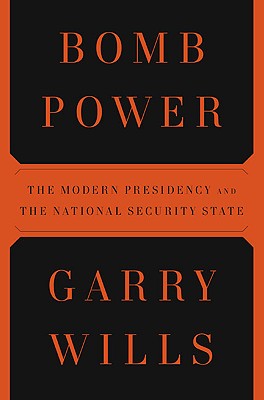
We see him now as a great mind, perhaps the most brilliant of all Supreme Court justices; as a crusader against oversized institutions; and as a luminously eloquent exponent of free speech and privacy—"the right to be let alone." But he was much more complicated: more conflicted, more interesting.Urofsky "gives us a book that is utterly fascinating."
The life of Brandeis, as explored in Urofsky's remarkable book, had innumerable passages that amaze....Professor Urofsky captures the sweep and the details of that life with what has to be called devotion. More than half the book is about Brandeis's pre-Court years—after all, he was fifty-nine when he was nominated—and one's fascination may flag during discussions of the New Haven Railroad or savings bank life insurance. But Urofsky aimed for completeness, and his achievement is remarkable.The full review is here (subscription required).
CRISIS AND COMMAND: The History of Executive Power From George Washington to George W. Bu
 sh by John Yoo and BOMB POWER: The Modern Presidency and the National Security State by Garry Wills are reviewed by Walter Isaacson in the New York Times. Yoo argues that "War acts on executive power as an accelerant...causing it to burn hotter, brighter and swifter," and Wills "argues much the same thing, adding that the advent of atomic weapons has made this concentration of power in the White House even greater." Isaacson writes: "Where the two authors disagree is on whether this trend should be celebrated or denounced." The reviewer thinks of both as "'advocacy history,' in which scholarly analysis and narrative are marshaled into the service of a political argument." Read the rest here.
sh by John Yoo and BOMB POWER: The Modern Presidency and the National Security State by Garry Wills are reviewed by Walter Isaacson in the New York Times. Yoo argues that "War acts on executive power as an accelerant...causing it to burn hotter, brighter and swifter," and Wills "argues much the same thing, adding that the advent of atomic weapons has made this concentration of power in the White House even greater." Isaacson writes: "Where the two authors disagree is on whether this trend should be celebrated or denounced." The reviewer thinks of both as "'advocacy history,' in which scholarly analysis and narrative are marshaled into the service of a political argument." Read the rest here.Also reviewed in the NY Times is The Struggle to Create Post-Cold War Europe by Mary Elise Sarotte. The Conservative Turn: Lionel Trilling, Whittaker Chambers, and the Lessons of Anti-Communism by Michael Kimmage is taken up at the New Republic Book Blog.
THE DEAD HAND: The Untold Story of The Cold War Arms Race and Its Dangerous Legacy by David E. Hoffman is reviewed in the Washington Post.